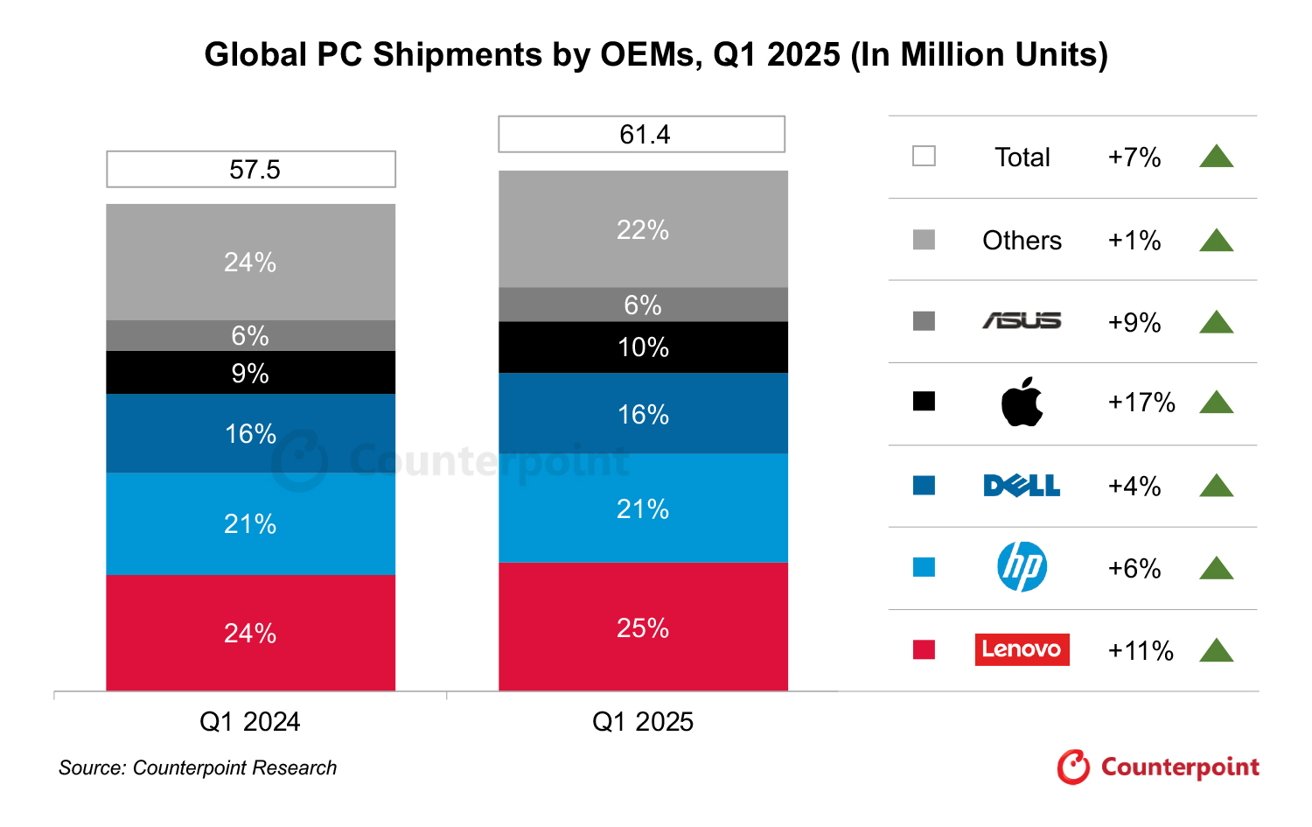Apple and other PC makers posted big shipment gains in early 2025 compared to 2024, but the numbers hide a deeper story.
According to Counterpoint Research, global PC shipments rose 6.7% year over year in the first quarter of 2025, reaching 61.4 million units. That headline figure, though, deserves a closer look.
Much of the uptick came from vendors rushing to ship products before new U.S. tariffs take effect, meaning the spike reflects inventory movement, not consumer demand.
Apple and Lenovo lead the AI PC charge
Despite the market uncertainty, Apple and Lenovo outperformed. Apple’s MacBook shipments grew 17 percent on the back of its new M4-powered models, which emphasize AI capabilities.
Lenovo posted 11 percent growth with strong demand for its AI-enabled laptops and a diverse product lineup. HP and Dell also saw modest gains, up 6 percent and 4 percent, respectively, aided by the same pre-tariff stockpiling behavior.
The market is gradually consolidating around major players. Counterpoint suggests that future winners will be the companies that can offer compelling AI experiences while diversifying their supply chains.
Shipment growth doesn’t mean sales growth
The report isn’t really about customers buying more PCs. The increase reflects PC makers pulling forward inventory to avoid tariffs. Those devices may sit in warehouses or on retail shelves for months.
As a result, year-over-year comparisons are tricky. Quarter one of 2024 didn’t have the same artificial push, so the 6.7 percent gain may not signal a true market rebound.
Temporary tariff exemptions on laptops and smartphones gave vendors a window to accelerate shipments. But with new duties on semiconductors expected soon, manufacturers are bracing for cost hikes and slower growth.
Apple’s earnings are soon. Most of the surge in imports aren’t going to be reflected in the first quarter, as shipments are not the same as sales.
Tariffs cloud the outlook for 2025
Even with the Q1 boost, analysts are cautious. The U.S. remains the largest market for advanced AI PCs, but high tariffs or shifting rules could discourage both consumers and businesses from upgrading.
Much of the world’s PC manufacturing still happens in China, and that poses risks. Some companies are relocating production to Vietnam, India, and Mexico, but none offer a perfect solution. Each country has its own trade complexities and tariff exposure.
PC buyers shouldn’t expect prices to stay stable, especially for AI-enabled models that rely on high-end chips. Vendors, meanwhile, will need to navigate tariffs, shifting supply chains, and uneven demand.
Q1 may look good on paper, but it’s a shaky start to a year defined more by geopolitics than consumer trends.





